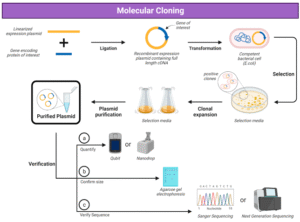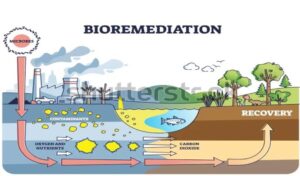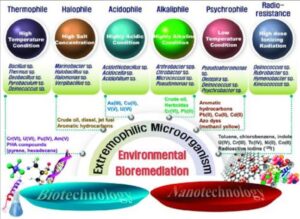Back to: MICROBIOLOGY 500 LEVEL
Welcome to class!
Welcome, my brilliant earth-healing scientist! It’s always a joy having you here. Today, we’re looking at a powerful, nature-inspired solution to one of Nigeria’s biggest problems—pollution. Our topic is Bioremediation Advancements, and trust me, this is science in action—cleaning up our rivers, oil-spilled lands, and even factory waste, all with the help of microbes!
Let’s find out how these tiny organisms are doing big things to restore our environment and health.
Bioremediation Advancements
What is Bioremediation?
Bioremediation is a method where microorganisms like bacteria, fungi, or even plants are used to clean up pollution from the environment. It could be in soil, water, or air.

Think of it this way: Just like you sweep your room or wash your hands to get rid of dirt and germs, microbes can “sweep” and “digest” harmful substances from oil spills, chemical waste, sewage, and even heavy metals—making the environment clean and safe again.
How Does It Work?
These microbes use the pollutants as food, breaking them down into harmless substances like carbon dioxide, water, and biomass.
There are two main types:
In situ bioremediation: Cleaning takes place right at the contaminated site (e.g. oil-polluted soil in the Niger Delta).
Ex situ bioremediation: Contaminated material is removed and treated elsewhere.
Some helpful microbes used include:
Pseudomonas putida – breaks down oil and hydrocarbons.
Bacillus subtilis – helpful in cleaning up pesticides.
Fungi like Phanerochaete chrysosporium – used to degrade dyes and industrial waste.
Recent Advancements in Bioremediation
Genetically Engineered Microbes (GEMs):
Scientists are now designing microbes to be even better at breaking down pollutants. For example, modified E. coli strains that can target specific heavy metals like lead or mercury.

Nano-bioremediation:
This involves combining microbes with nanoparticles to speed up the clean-up process. It’s more efficient and effective in removing toxins.
Plant-microbe partnerships (Phytoremediation):
Using plants like sunflowers or maize with soil bacteria to clean up land. The plant absorbs heavy metals, and microbes in the root zone help break down toxins.
Oil-eating consortia:
In places like the Niger Delta, scientists are using microbial communities (consortia) that work together to clean oil-contaminated soils faster than a single strain could.
Why It Matters in Nigeria
Oil spills in places like Bayelsa and Rivers State are major threats to farming and fishing.

Industrial waste in Lagos and Kano pollutes rivers and land.
Bioremediation is affordable, eco-friendly, and locally adaptable.
It empowers local communities to restore their environment without relying solely on chemicals or expensive machines.
Summary
- Bioremediation uses microbes or plants to clean polluted environments.
- It can happen on-site (in situ) or off-site (ex situ).
- Recent advancements include genetically engineered microbes, nano-bioremediation, and plant-microbe partnerships.
- It offers Nigeria a safe, cost-effective way to manage pollution and protect public health.
Evaluation
- What is bioremediation and give one example of its use?
- Name two recent advancements in bioremediation.
- Why is bioremediation important for Nigeria?
You’ve done an amazing job today, my eco-warrior! Just imagine the power in your hands—to restore polluted lands, protect communities, and shape a greener Nigeria. Keep nurturing that spark of brilliance—Afrilearn is here to support your journey to greatness. Until next time, keep shining bright!
